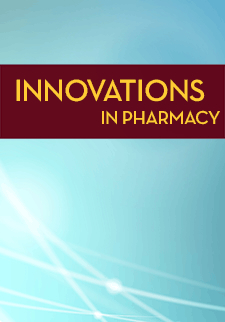A Pilot Study of Hemoglobin A1C Levels in Patients with Type 2 Diabetes after Creation of a Patient Assistance Program Enrollment Committee at a Student-Run Free Clinic
John D. Salvemini
University of Mississippi Medical Center
https://orcid.org/0009-0009-6378-0351
Gregory R. Vance
University of Mississippi Medical Center
Amanda Pham
University of Mississippi Medical Center
Garner Fincher
University of Mississippi Medical Center
Johnny Yang
University of Mississippi Medical Center
https://orcid.org/0000-0003-2690-3155
Harshin Sanjanwala
University of Mississippi Medical Center
Leonna Conley
University of Mississippi Medical Center
Alan Penman
University of Mississippi Medical Center
James Pitcock
University of Mississippi
https://orcid.org/0000-0003-4701-8462
DOI: https://doi.org/10.24926/iip.v15i4.6435
Keywords: patient assistance program, student-run free clinic, diabetes
Abstract
Background: Our student-run free clinic (SRFC) treats uninsured patients with type 2 diabetes (T2D) in a medically underserved region. Mississippi has the second highest diabetes prevalence in the nation. Increasing access for patients with diabetes to affordable medication is challenging. Some studies provide encouraging results for lowering hemoglobin A1C and increasing medication adherence through patient assistance programs (PAP). None have examined a student-run PAP committee’s impact on diabetes outcomes.
Objective: To compare A1C levels for patients with diabetes enrolled in PAPs by our committee with those not enrolled and to describe clinical outcomes.
Methods: A retrospective review of patients with T2D at our SRFC between 2015 and 2023 was performed. The primary outcome was change in A1C within a 4-9 month follow-up window. Secondary outcomes were emergency department (ED) visits and hospital admissions.
Results: Twenty-five patients with T2D were enrolled in PAPs, while 77 were not. The PAP group had a higher baseline A1C (10.9% vs. 8.7%). The difference in A1C between groups was not statistically significant (P=0.68), even with adjustment for covariates (P=0.59). ED visit and hospital admission frequency was similar between groups. Neuropathy was the most common diabetic complication. ED visits and hospital admissions for heart attacks occurred only in the non-PAP group.
Conclusion: While patients enrolled in PAPs showed a greater average reduction in A1C, the difference was not statistically significant. The higher baseline A1C in the PAP group carries greater reduction potential. A prospective study is necessary to better evaluate PAP enrollment outcomes for uninsured patients with diabetes.



